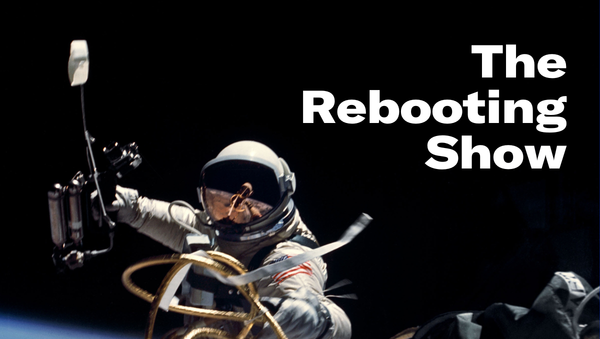Narrative violations
OpenAI drama and the information space

Recent research conducted by The Rebooting in collaboration with BlueConic found that publishers are mixed about the progress they’ve made with subscriptions. While a majority said they see subscriptions as a key strategic imperative, three in five apprised their results as either “OK” or worse. While churn lurks as a critical issue, the biggest focus of publishers remains getting more subscribers, the research found. Get the full report.
This week, I wrote about how the drama at OpenAI is a sign of how the power of the media has receded as it becomes one of many nodes in the information space.
Narrative violations

The timing couldn’t have been better. The Friday before Thanksgiving week is an ideal time for a news dump, when companies or politicians try to bury bad news. Instead, the Friday afternoon shock that OpenAI CEO Sam Altman was being removed entered into prime time for the always-on information space.
There was no waiting for the inevitable behind-the-scenes tick-tock from The New York Times or Wall Street Journal. The information space, like crypto, doesn’t have opening or closing hours. The lack of information only served to fuel the basest of our current instincts: narrative creation. The creation of narratives has moved from the media establishment to the free-for-all of the information space, where professional media rubs up against corporatist interest groups, anonymous shitposters, PR-savvy venture capitalists, conspiratorialists, shameless careerists and pretty much a chaotic Noah’s Ark of humanity that’s sometimes reminiscent of the 700 Level at the Vet.
For some, Altman was deposed in a coup led by Effective Altruists, DEI bureaucrats, anti-tech doomers in the media, woke academics and probably San Francisco politicians. The saga caps a year of tech meltdowns, from FTX to Silicon Valley Bank to OpenAI.
The normal impulse to the original news that lit up my text messages was “it must be bad.” That would be true in the old world. In the old world, the statement would include a canned PR quote and effusive thanks for his undeniable contribution to pushing artificial intelligence in the mainstream. This statement instead came close to the euphemisms for corporate skullduggery by saying Altman was “less than candid.” This is a story of misalignment between the mission of a non-profit, mission-driven oriented and the cut-and-thrust of profit-seeking capitalism.
I’ve spent much of my career observing the uncomfortable gap between “New York” and “Silicon Valley.” Those are the symbolic poles of the old and new worlds. New York is the stand-in for media and advertising and San Francisco for the tech elite that have supplanted media and marketing as a power center. And no matter what this story ultimately is about, it is about power, just as Putin vs Prigozhin wasn’t a disagreement about military strategy in the Donbas.
We all tend to be terrible judges of ourselves, since we all cast ourselves as the protagonists in the dramas we write. Silicon Valley is no different. In its narrative, intrepid entrepreneurs are conjuring the future out of thin air, usually against the predations of a corrupt establishment. The totems of this narrative have stayed remarkably consistent over the years. The garage, the napkin, the lonely toil against doubters, the air mattress in the office, the near-death experiences and the struggle of the capital allocator in the arena, trying things and podcasting.
The defenestration was quickly shoehorned into this simplistic narrative. In the information system, establishing a narrative is critical. And that means simple messages repeated ad nauseum until they’re willed into plausibility. In the information space, political campaigning is the norm. That means simple messages and repetition.
Silicon Valley types know the advantages of first-move advantage. For all the talk of innovation, Silicon Valley has always focused on messaging, even if it outwardly disdained marketing and advertising. Think of the embrace of “sharing economy” as cover for unregulated taxi services and hotels. The shape shifting is a feature, not a bug. See the sudden embrace of patriotism by the Silicon Valley establishment that was until very recently ardent globalists. I expect the decentralized networked state enthusiasts will twist themselves into knots to find victory in Microsoft emerging more powerful. Shoutout decentralization.
The battleground formerly would have been through media leaks, but instead, Twitter/X has become the heart of the information space. Altman easily slid into the role of Steve Jobs, martyred by retrograde forces, never mind the truth is always complicated and rarely lines up with good guys vs the bad guys.
It was telling that through a weekend of high stakes negotiations, Altman took time to play Twitter/X tea leaves. Some speculated his message “i love you all” was a threat to his now enemy Ilya Sutskever, an assumed coup plotter. Employees responded with emojis, part of an apparent concerted plan to exert pressure on the OpenAI board by making clear where loyalties were. Altman, who is no stranger to carefully cultivating a narrative, created his own Boris Yeltsin on a tank image by showing himself grimly holding up a guest pass at OpenAI headquarters on Saturday.
In the end, despite the information-space posturing, this power fight ended in the typical way: a back room deal that landed Altman, and presumably much of the OpenAI team, at Microsoft. The chess board changes.
All this playing out in public is remarkable. Sure, it might be “nerd drama,” but it is more proof that for all Silicon Valley inveighs against the controlling power of the media, it has mostly successfully outflanked its power. Instead, the media has mostly been bystanders to the real action on Twitter and Reddit. I joked, on Twitter/X of course, that we’d all just have to wait for All-In to understand what was going on here. In fact, over on Reddit David Sacks did have one of the more plausible theories by unpacking the curious position of Altman now owning shares in OpenAI but controlling the non-profit foundation, which itself provided narrative cover to the extend Microsoft’s president could wave it around as preferable to the evils of a for-profit corporation having such power. Heavens, just imagine such a situation.
And as time went on, the narrative pendulum ever so slightly began to swing from the rush to canonize “Sam” (this is Silicon Valley, everyone gets first-name treatment) to scrutiny of the gap between the public narrative and the inevitably messy private reputation of a powerbroker. You do not rise to that position in Silicon Valley without raw power projection. And much of what we’re seeing play out at OpenAI is a display of raw power. Microsoft was not going to say “too bad, so sad” after it yoked its future to OpenAI. You don’t give the CEO of a $2.3 trillion company that committed $13 billion in funding a minute heads-up on threatening a critical partnership. That doesn’t go over great.
The big unknown is whether the triumph of the information space over the media will yield better results. I’ve long seen many of the invectives the tech industry hurls at the media are done in bad faith. Using the media as an enemy is a well-worn topic for the powerful, and the tech industry’s scrappy narrative is wearing thin as it has accumulated unprecedented power and loudly tells the world it wants to remake how societies function.
That will bring about more conflict, both with other societal power centers and within tech itself, hardly a monolith but filled with its own factions that will inevitably look to create leverage through narrative. One person’s “doomer” and “safetyist” is another’s “responsible” and “ethical.”

The future of growth in publishing
We’re all in pursuit of strong and consistent growth to make our media brands lasting businesses amidst the push and pull of revenue requirements, shifting audience consumption behaviors, and turbulence in the market. House of Kaizen has a Growth Diagnostic used by publishers, and other recurring revenue products, to identify and drive sustainable growth with audience-first experience optimization. Through their decades of working with the world’s best subscription products, they know what creates sustainable net-growth and will help you to find better alignment between your audience expectations and the product experience.
Thanks for reading. Send me a note with feedback by hitting reply.




